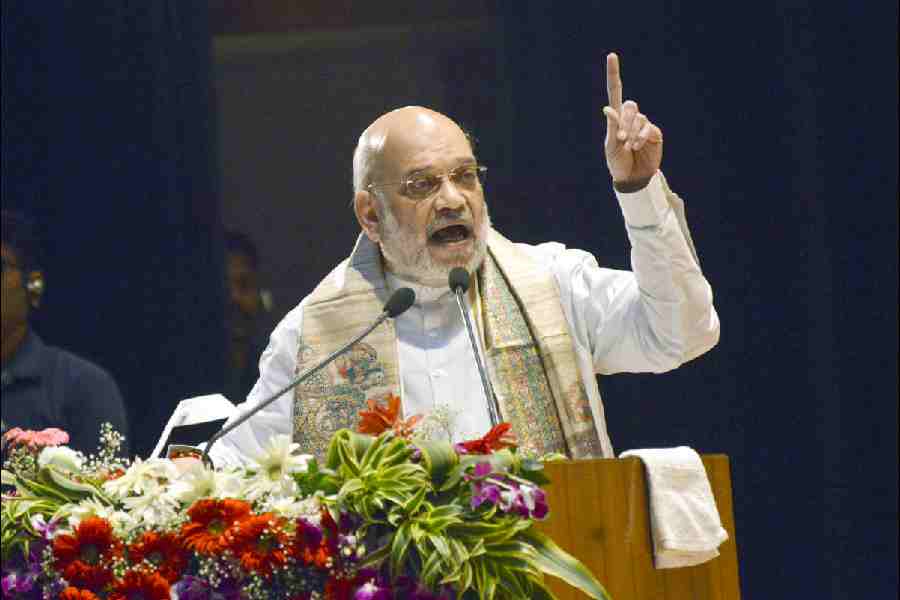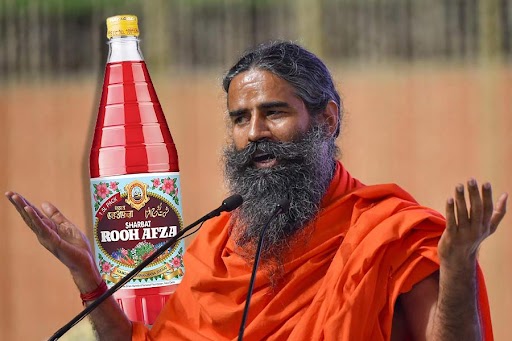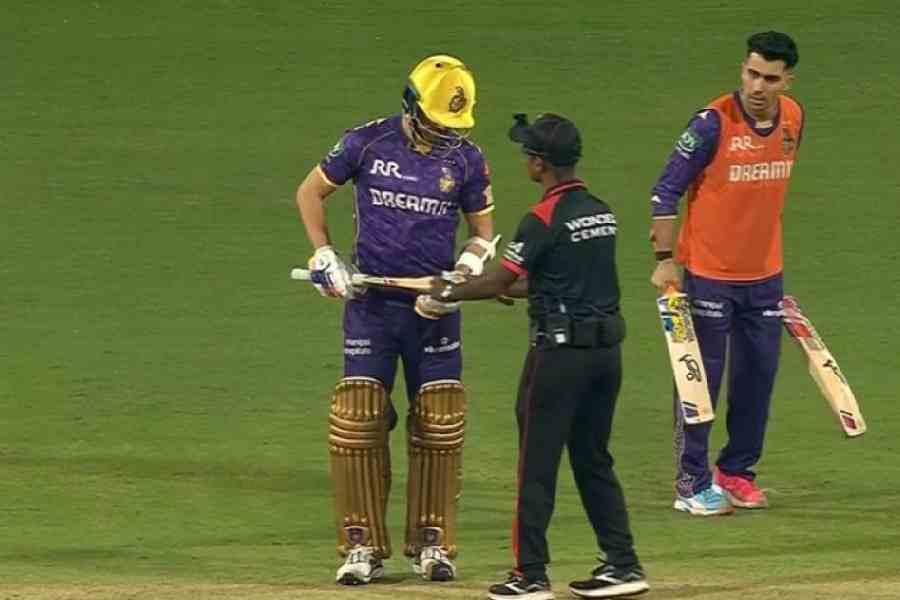 |
| FOOD FAVES: A crowded table at Essence, the restobar at Amber (below); Cinnamon on Park Street |
 |
Surprise, surprise: Park Street, once Calcutta’s culinary centre and now the graveyard of some of its best-known restaurants, could be looking at a mini culinary revival. Cinnamon, a spacious 6,000 square-feet, 134-seater restaurant opened here over a month ago. Set up at a cost of a couple of crore rupees, it offers unique Mediterranean cuisine and swank interiors. Cinnamon is expected to bring back fine dining to Park Street ? and perhaps symbolises the City of Joy’s restaurant renaissance.
Suddenly, new restaurants are opening in the city like there’s no tomorrow. Kentucky Fried Chicken (KFC) opened its first Calcutta outlet at Salt Lake’s City Centre mall in end-June. Bhojohori Manna, which has redefined the idea of Bengali cuisine, opened its fourth outlet at Hindustan Road in March this year. It had started with a small 16-seater place in March 2003. Oh! Calcutta, promoted by Speciality Restaurants, too, opened in 2003 at the shopping plaza Forum. Mainland China, the other restaurant run by Speciality Restaurants, opened in 2000 on Gurusaday Road. Says Alok Choudhury, secretary general of the Hotel and Restaurant Association of Eastern India: “Since March 2005, 40-odd restaurants and hotels, both small and big, have come up in Calcutta.”
Even more will open over the next one year. Speciality Restaurants will be coming up with eight new restaurants in and around the city. KFC is looking for two more places, preferably in south Calcutta, by next year.
All the new restaurants are doing roaring business. “Our first-day sales touched almost Rs 2 lakh. Now the daily sales figure is over Rs 1 lakh ? better than at our new outlets in Chandigarh and Pune. The daily footfall is over 1,000, going up to 2,500 on weekends,” reveals Partha Roy, general manager of KFC. The outlet has space for just 72 people. Bhojohori Manna sees a footfall of 750-plus on weekends at its four outlets, which have in all 124 seats. Each plate at the restaurant costs, on an average, Rs 150. “It takes about three to three-and-a-half years to break even with a stand-alone restaurant in other cities. In Calcutta that happens much faster,” says Anjan Chatterjee, director of Speciality Restaurants.
To be sure, some of the city’s older restaurants are shutting down. About four to five old restaurants have closed in Calcutta, confirms Choudhury. Cinnamon stands next door to where Waldorf, one of the best Chinese restaurants in Calcutta, stood a few years ago. Blue Fox, another famous Park Street haunt, stands desolate with closed doors, a stone’s throw away.
But the closures don’t faze Cinnamon proprietor Ashish Chakraborty, brother of Swedish hotel tycoon Bicky Chakraborty. “A Calcuttan doesn’t just want good food. He has travelled abroad, has had a taste of world-class dining and knows what Lebanese or Turkish cuisine is all about. He wants this complete experience now ? that’s where the old restaurants were lacking,” he says.
The older restaurants got into trouble for other reasons too. Some others on Park Street like Bar-B-Q and Blue Fox ? which closed about two months back ? were plagued by labour trouble. “Though old places are closing, the new series of restaurants shows that there are still unexplored areas in the hotel industry. The market is far from saturated,” says an industry insider. “People love to experiment with cuisine these days. Though we have an Indian section, it’s our Mediterranean section, with its pastas and risottos, that’s doing roaring business,” confirms Chakraborty of Cinnamon.
Diners are more demanding today. “Earlier, hoteliers could get away with murder,” notes Sanjay Khullar, director of Amber, one of Calcutta’s vintage restaurants. “Trained service was hard to come by and most places had unskilled waiters who learnt on the job.” The service wasn’t always first class, but patrons didn’t seem to mind. Today, however, diners look for a bit more than just a good plate of grilled bekti. So Khullar has opened Essence, a swank 100-seater restobar a floor above Amber. Owners of other old restaurants too have branched out into newer areas of the F&B industry. “In spite of the trouble Blue Fox is giving me, I’m opening a food court with everything from coffee shops to fast-food outlets on Russell Street in central Calcutta’s business district,” says Munna Maharaj, the owner of Blue Fox.
D?cor and ambience too have played a major role in luring customers away from their old haunts. The new restaurants are putting a lot of thought into their interiors ?even the lowly salt shaker on the designer table is not overlooked. Up to 60 per cent of the cost of a restaurant is spent on getting the ambience right. Decorating interiors can cost Rs 2,500 to Rs 3,000 per square foot, something the old restaurants wouldn’t even dream of spending.
Indeed, Calcutta’s restaurant industry is striking out in two directions in a city that is still overwhelmingly Bengali. First of all, the number of restaurants serving Bengali food has risen sharply ? but a major part of the clientele is not Bengali. “Earlier, there was a certain embarrassment about spending on Bengali food with all its paraphernalia of jhal, jhol, chochchori and ombol,” says Rakhi Purnima Dasgupta, owner of Kewpie’s kitchen on Elgin Lane, one of the first restaurants to take the Bengali eating experience out of the joint-family kitchen. At Bhojohori Manna, about 30 per cent of the customers on a weekday are non-Bengalis.
Secondly, the new restaurants are trying everything, from involving stars to improvising on cuisine, to carve out their own space. Sourav’s, the food pavilion, has tapped into Indian cricket captain Sourav Ganguly’s brand value, while Bhojohori Manna has filmmaker Goutam Ghose as one of the partners. Others have targeted specific groups like the kitty-party circle or company executives and designed their menus accordingly.
The spurt of new restaurants is partly prompted by the city’s changing spending patterns. “A recent food festival across Indian cities showed Calcuttans outspending gourmets elsewhere by a substantial margin. It also shows the city’s comfort level with credit cards as a payment option,” says Ravi Narayanan, vice-president and head of merchant services at HDFC bank. During the festival, the Calcutta credit card spend figure increased by a whopping 453 per cent. For debit cards, the figure was 287 per cent.
The changing attitude has as much to do with a globalised culture as with inner-city dynamics. Calcutta, expanding along its eastern corridor, is set to see a mushrooming of malls. Chatterjee, for one, is gearing up for it. Haka at the City Centre mall in Salt Lake is to open by the end of 2005. Great Indian Spice Trail will open its doors on the E.M. Bypass. A total of eight restaurants, each with over 140 seats, are to come up by next year. A massive food court in the satellite town of Rajarhat is also on the anvil. But, as hoteliers reiterate, amid the increased competition, survival will be that much tougher. Notes Chatterjee: “You are only as good as your last customer who walks out every night.”











